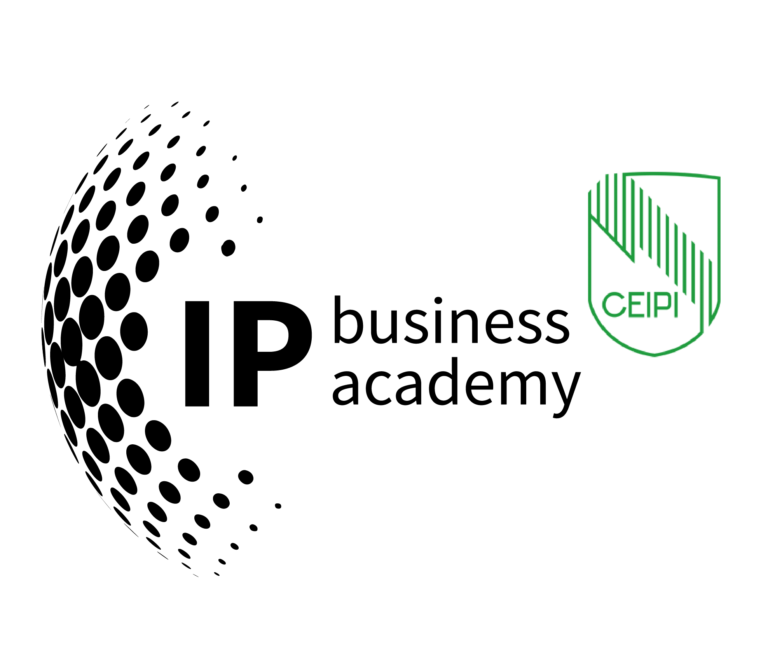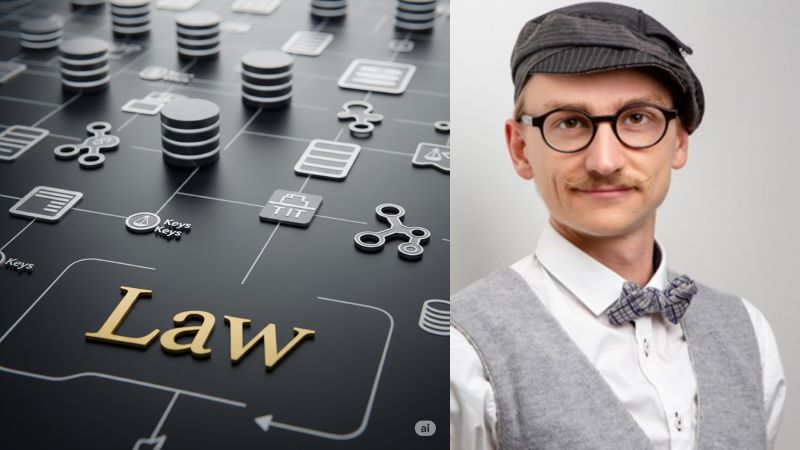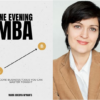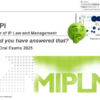AI-Based Court Decision Analysis: A Deep Dive with Til Martin Bussmann-Welsch
In this CEIP IP Business Talk, the focus was on a subject that’s rapidly transforming how legal professionals, especially in Intellectual Property (IP) law, approach their work: AI-based court decision analysis. On 8th of July, host Alexander Wurzer welcomed Til Martin Bussmann-Welsch, an expert at the forefront of this new field. From how he entered the legal tech world to the founding and positioning of his platform Anita, this talk explored how AI can make court decision data more accessible, reliable, and practical for IP experts.
A Personal Journey into Legal Tech
Til began by recounting his entry into this niche field. Having studied law in Germany, his interest was piqued during his second semester, around 2015, when the second wave of legal tech made headlines. Back then, rule-based systems and bold predictions about the end of lawyers were trending topics. Influenced by thinkers like Richard Susskind, Til wondered if the profession was at risk of being automated out of existence.
Instead of feeling threatened, he recognized an opportunity: automation would certainly change the legal landscape, but it wouldn’t render legal work obsolete. He wanted to be part of the wave that shapes how technology and law intersect. This led him to work alongside Frederik Tholey at a legal boutique. Together, they explored which sector to tackle and settled on a novel idea: applying technology to analyze judicial behavior.
Til’s PhD, supervised by influential legal academics like Stephan Breidenbach, focused on the factors that influence judges’ decisions — an area relatively underexplored in Europe compared to the U.S., Russia, or China. Recognizing this gap, they envisioned building a database to capture patterns in court decisions: how judges rule, what arguments appear repeatedly, and which outcomes are statistically probable.
IP Law: The Natural Starting Point
When asked why his initial applications of this technology targeted IP law, Til explains that IP lawyers are more receptive to tech innovations than other legal fields. While the legal profession is broadly conservative, IP law stands out for its natural alignment with new technologies—after all, IP law exists to manage innovation. Patent law, design rights, and even the broader domain of IP practice demand familiarity with cutting-edge tools and ideas.
Although some IP lawyers self-describe as conservative, Til and his team found IP practitioners relatively open-minded about using AI tools for tasks like patent drafting or searches. This openness provided fertile ground for testing and scaling their solutions.
Introducing Anita: From ‘iur.crowd’ to a Trusted Legal Database
The centerpiece of Til’s current work is Anita, a platform for AI-driven legal analytics. Originally, the project launched under the name ‘iur.crowd’, inspired by the Latin word juris (law) and the idea of crowdsourcing legal data. The premise was simple yet ambitious: court decision data is scarce — only about 1% of rulings are public — so they’d build a ‘crowd’ of contributors, primarily law firms, willing to share their case data to create a richer data lake.
However, they soon discovered that ‘iur.crowd’ was not an ideal brand—too vague, potentially confusing to spell or pronounce, and lacking resonance in the legal market. In rebranding, they found inspiration in legal history: Anita Augspurg, the first woman to earn a legal PhD in Germany. Besides its symbolic nod to legal progress, ‘Anita’ is memorable, easy to spell, and distinctive — perfect for trademark purposes.
Today, Anita is not just a database but a platform. It lets legal professionals interact with court decision data through natural language queries and receive answers with precise footnote references. The goal is to integrate this research directly into daily legal workflows, automating the repetitive aspects of legal research and boosting accuracy.
How Anita Differs from Simple LLM Wrappers
A central theme of the discussion was the difference between Anita and the growing trend of ‘thin wrappers’ for large language models (LLMs). Many companies now build simple interfaces that sit on top of GPT-based engines or similar models, adding minimal additional value. For legal work — where the stakes for accuracy and source integrity are high — such wrappers can be risky.
Til clarified how Anita is fundamentally different:
- Unique Data Pool: Anita is fed with carefully curated court decision data, combining publicly available rulings with law firm contributions. While you could upload a ruling to Google Notebook LM or feed text to ChatGPT, your data pool would be shallow and fragmented by comparison.
- Explainable AI: Unlike general-purpose LLMs, Anita’s AI is designed to be transparent. Standard LLMs often ‘hallucinate’ — they fabricate facts, quotes, or sources. For a lawyer, this is unacceptable. Anita’s architecture tracks its reasoning, verifying sources line by line. Users can click a quote and instantly trace it back to its actual origin in the database, eliminating guesswork and liability risks.
- Minimized Hallucinations: Research shows hallucination rates can reach 30% with well-known platforms. General models like ChatGPT are notorious people pleasers — they generate plausible-sounding answers, whether or not they’re true. Anita’s system architecture tackles this risk by comparing AI output with its verified source data, ensuring any generated text stays anchored in factual, documented rulings.
The Importance of Trust and Verification
To illustrate the pitfalls of hallucination, Alexander recounted his own experience using Gemini and ChatGPT to analyze Marshall Phelps’ famous book Burning the Ships. The AI confidently attributed a quote about open source to him. When pressed for the exact page reference, the AI admitted the quote didn’t exist. This kind of unreliability is unacceptable in legal work, where misleading a client or court can have dire consequences.
By contrast, Anita’s verifiability builds user trust. For Til’s team, the core idea is that AI should not replace legal professionals’ judgment but enhance it by providing rigorously sourced, easily traceable answers. This elevates AI from a risky shortcut to a practical tool for high-stakes legal practice.
Broader Implications: Transforming Legal Workflows
Alexander then steered the discussion towards broader questions: what does the future hold for IP professionals amid the ongoing digital transformation? How should lawyers adapt their work processes?
Til pointed out that law has historically been slow to change, but the proliferation of digital tools is pushing the profession toward greater efficiency. Many mundane tasks — like repetitive research — are ripe for automation. By freeing up lawyers from these chores, AI lets them focus on strategy, creativity, and client relationships.
For IP lawyers specifically, the potential is huge. They already engage deeply with innovation; it makes sense for their own work to reflect that same spirit. Integrating AI tools into tasks like prior art searches, drafting, or litigation strategy can help IP firms offer better value, faster.
Opportunities and Ethical Questions
Still, challenges remain. One major concern is data privacy. Sharing court decisions is easier when they’re public, but much valuable insight lies in private case data held by law firms. Convincing law firms to contribute that data requires robust assurances about security and ethical use.
Til also acknowledged that there’s a fine line between assistance and overreach. Lawyers cannot abdicate responsibility. Even with Anita’s robust fact-checking, the final obligation to verify and interpret remains with the human professional.
A Future Vision for AI in Law
Anita’s roadmap extends well beyond just case decision analysis. The vision is to embed AI into every part of legal work that can benefit from structured knowledge — drafting, compliance checks, argumentation frameworks, and client advisory. As models become more sophisticated, the aim is to keep explainability and traceability at the core. Rather than a ‘black box,’ AI should act as an open book: powerful, but accountable.
This also reshapes legal education. Younger lawyers will need to master not only black-letter law but also the interplay between technology, data science, and legal practice. Those who embrace this hybrid skill set will be best positioned to lead.
Reflections: How the Legal Profession Will Evolve
Alexander closed the discussion with a reflection on the lawyer’s evolving identity. Rather than being displaced by machines, lawyers who understand AI can become more effective advisors. They’ll shift from being research-heavy technicians to strategic consultants who wield AI as an intelligent assistant.
Til agreed. The lawyer’s core role — interpreting nuances, arguing cases, advising clients — remains uniquely human. But AI will increasingly handle the heavy lifting behind the scenes. The big opportunity is not about replacing lawyers but augmenting their abilities, reducing drudgery and minimizing risk.
Key Takeaways
This talk demonstrated that AI-based court decision analysis is not just a buzzword but a meaningful, practical evolution for IP professionals:
- Data-Driven Insights: Anita gives legal experts structured insights into judge behavior, ruling patterns, and argument trends — factors that can make or break a case.
- Explainability Matters: In law, trust hinges on traceability. Anita’s transparent AI prevents hallucinations and supports lawyers with verifiable references.
- Collaboration Over Replacement: Far from rendering lawyers obsolete, AI empowers them to deliver sharper, faster, and more reliable work.
- IP as a Digital Pioneer: Within the legal profession, IP lawyers are well-positioned to lead the way in adopting these tools because they’re already fluent in managing technological change.
The Road Ahead
Looking forward, Til and his team plan to expand Anita’s capabilities and reach. The bigger mission is to make explainable AI an industry standard, transforming not only how legal professionals work but how they relate to the broader ecosystem of innovation, compliance, and policy.
In a time when misinformation and AI hallucinations are a real risk, Anita’s approach stands out: a model of how AI can complement deep legal knowledge with rigorous, fact-based support. It’s a vision for a legal profession that’s more efficient, more accurate, and better equipped to handle the complexities of tomorrow’s innovation economy.



